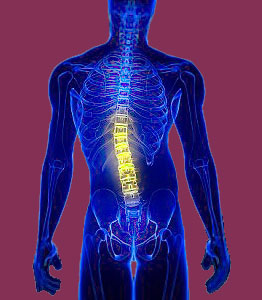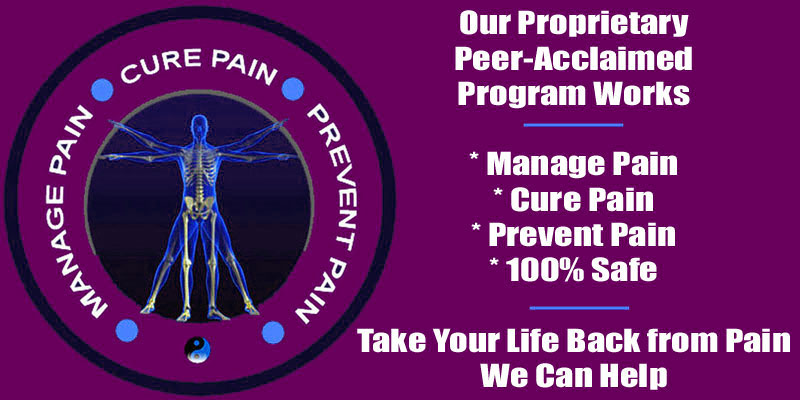
For symptomatic patients, finding scoliosis relief is a priority, but can also be a challenging proposition due to many reasons. Back pain is one of the most difficult types of symptomatic syndromes to relieve and symptoms that are caused by scoliotic formations in the vertebral column are no exception. In fact, since symptomatic scoliosis is usually of a severe variety, treatment choices are often limited and can produce disappointing results. However, for proactive patients who invest time and effort into educating themselves about the full gamut of scoliosis topics, relief is always easier to achieve. All patients must become involved in their own care, and learn to advocate for themselves, in order to improve the results of their diagnostic and therapy efforts.
This resource section provides helpful guidance for scoliosis sufferers in the form of a series of focused dialogs. We will discuss many important topics related to finding relief from scoliosis and will share our vast collective experience to assist patients in navigating the confusing care sector successfully. If you are frightened or conflicted about living with scoliosis, the essays in this section will help to put your mind at ease.
Scoliosis Relief Defined
Relief is not simply synonymous with pain management. Relief might include a decrease in physical pain, but it might also include other patient objectives, such as increased functionality and flexibility. Relief might be sought for the aesthetic issues and postural abnormalities associated with scoliosis. Relief is often wished for, but rarely received, for the considerable psychoemotional toll of atypical spinal curvatures. Therefore, if you are searching for “relief” you must be brutally honest with yourself and define what exactly you are seeking as a patient or a parent of a young patient.
In essence, the condition itself is not the main focus of finding relief. Instead, the patients must understand how the condition truly affects them and then seek ways to minimize the collateral effects of their scoliosis on form, function, life satisfaction, vocational ability, psychological state or any other quantifiable life factor.
Pain Relief Discussions
The following treatises provide guidance towards finding relief from the various common symptomatic manifestations of scoliosis. As each new dialog is published, it will be added to the list below:
Scoliosis pain management practices are usually pharmaceutical in nature, but many other options exist and do not demonstrate the same significant risk factors as drug therapies.
Is there an effectual scoliosis home remedy? For pain relief, yes. There are even curative methods of care than can reverse scoliosis at home for functional cases, rather than skeletal cases.
Scoliosis coping strategies provide techniques to help patients live better, despite having symptomatic or emotionally-affective side-to-side spinal curvature.
Scoliosis help is available online, from your doctor and from patient support groups. If you feel alone and in need of assistance, please reach out to a qualified advocacy source, such as The Cure Back Pain Network.
Holistic scoliosis treatment provides benefits to mind and body equally, while natural scoliosis treatment might have an organic source, but is entirely focused on the physical body, instead of the psychoemotional self.
Nonsurgical scoliosis treatment is a popular topic, since the operations used to treat atypical spinal curvatures are so invasive. Nonsurgical care certainly has advantages, but there are limitations to consider, as well.
Alternative medicine for scoliosis comes in many forms, ranging from the extremely effective to the ridiculous. We provide a full accounting of alternative medical practices.
Complementary medicine for scoliosis works well to help patients manage their symptoms. Complementary care is often less risky and just as effective as medical symptom-targeting practices.
Coaching for scoliosis provides a complete support system for patients with pain, functional limitations and psychological injury due to symptomatic spinal curvatures.
What is the ideal scoliosis prescription? Is there a one-size-fits-all approach that generally works well? We provide the answers you need.
Scoliosis clinical studies are sometimes available and can grant free treatment for patients who are interested in investigational therapies.
A major therapeutic goal is to stabilize scoliosis. How can this be achieved? Are there multiple possible solutions for most patients?
Finding Scoliosis Relief
Statistically, most scoliosis is mild and completely asymptomatic. Therefore affected people are rarely searching for relief from pain, although they might be seeking relief from postural and aesthetic issues associated with their conditions. Many diagnosed people are looking for reassurance and understanding, more than symptom reduction. We take all these important needs into account on this website.
Relief is more than just pain management. It is the reduction of the overall physical and/or emotional toll of atypical spinal curvature that can only come from a combined mindbody approach to care. Therefore, we highly recommend reading both our scoliosis products page to address physical needs, as well as our psychology section to address the more important nonstructural needs.
Our proven pain relief program works great fro a wide of diagnoses. The program is safe, effective and online to provide immediate help for people who need it right now.





